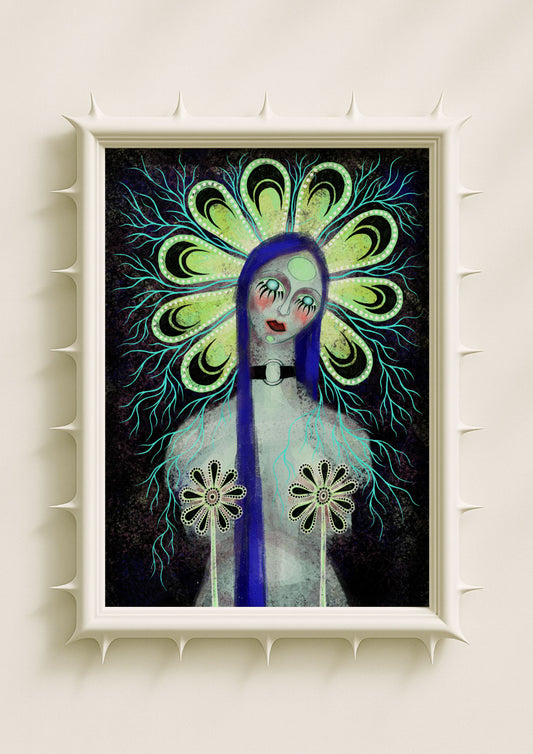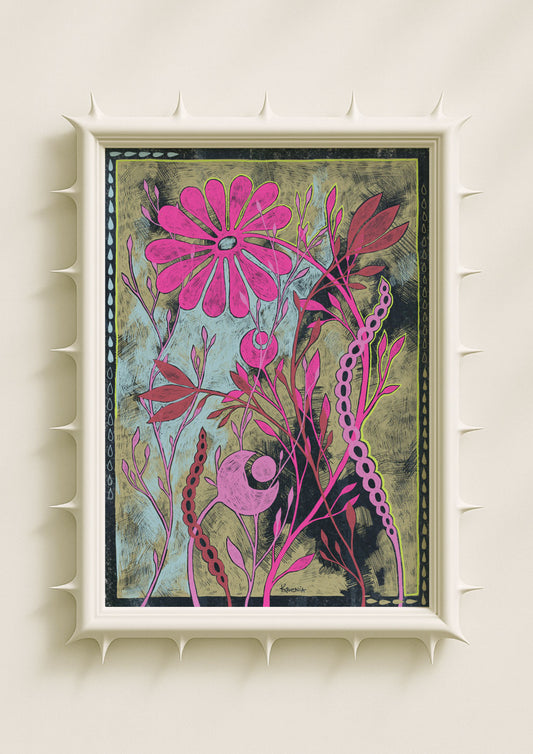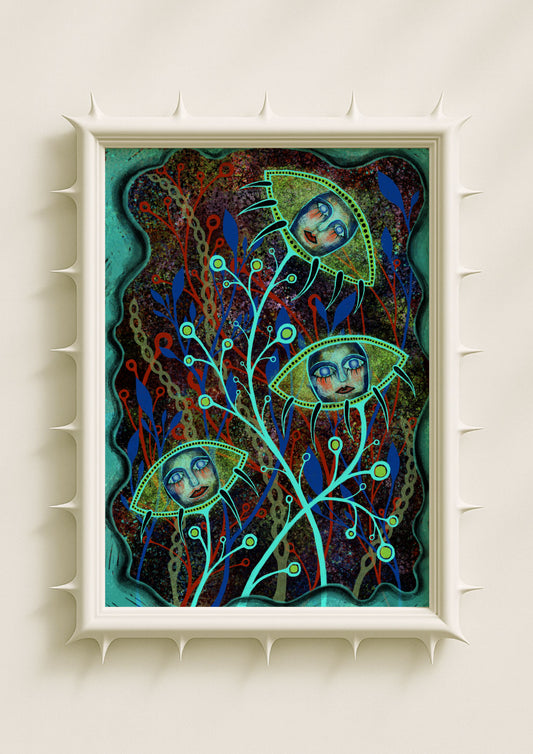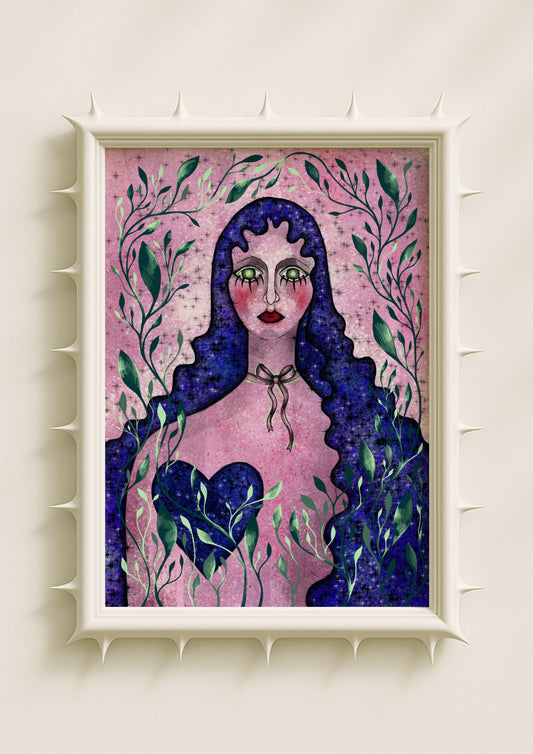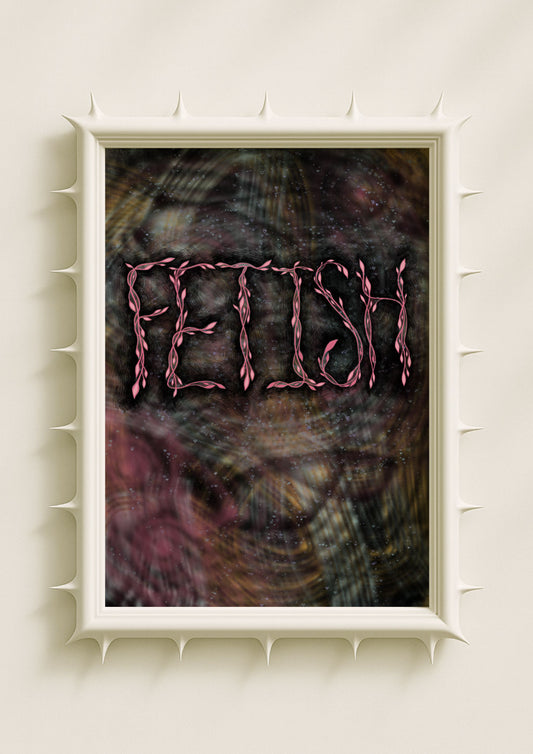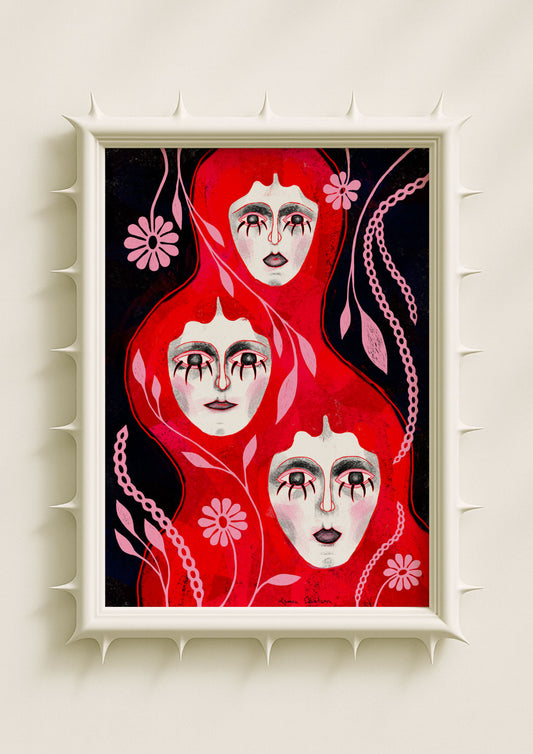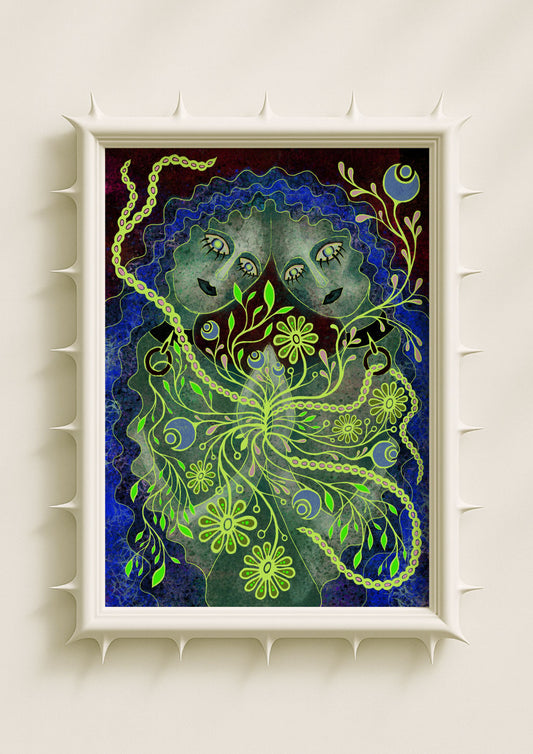Why Raw Art Belongs in Fearless Spaces
Raw art prints carry a kind of emotional voltage that feels immediate. They arrive without preparation, without politeness, without the careful filtering that often smooths out contemporary aesthetics. When I work in a raw, gestural way, I lean into instinct — quick marks, imperfect shapes, sensitive textures that record the hand in motion. This unpolished language resonates with interiors that want to feel alive rather than perfectly controlled. A raw art print becomes a pulse on the wall. It disrupts, deepens, and grounds the atmosphere of a room.

The Beauty of Imperfect Gesture
The heart of raw art lies in the gesture. The line that trembles. The brushstroke that stops abruptly. The contour that is slightly off and therefore irresistibly human. These gestures communicate more than composition; they reveal the emotional state behind the movement. When these choices appear in a poster, they create an energy that can’t be replicated with digital smoothness. In an interior, this energy feels like presence. The artwork reminds the room that emotion doesn’t need to be tidy to be meaningful.
Texture as a Memory of the Hand
Raw art often leaves visible the traces of process — scratches, uneven colour fields, rough layering, the softness of diluted pigment flowing across the paper. These textures have their own emotional gravity. They behave like scars, or like delicate surfaces that have been touched many times. When translated into a wall art print, this texture adds a tactile quality even without physical relief. In a bold interior, these surfaces work like counterweight. They soften sharp lines, enrich minimal walls and build dimension in spaces that crave sensuality over polish.

The Emotional Honesty of Unfiltered Portraits
Many of my raw pieces take the shape of portraits — faces with quick outlines, heavy eyes, asymmetrical expressions. These figures often feel younger, more vulnerable, more urgent. They capture emotion in its first second, before logic steps in to tidy it up. On a wall, these portraits act almost like companions. They don’t pretend. They don’t flatter. They create a direct line of emotional communication, the kind that bold interiors can hold with confidence. A raw face meets the viewer without costume or decoration. It simply exists, and that is enough.
Bold Interiors Thrive on Contrast
In contemporary design, boldness isn’t about loud colours or maximalist patterns. It’s about contrast — emotional, visual, conceptual. A raw art print introduced into a highly curated room creates a deliberate dissonance. The furniture may be sleek, the palette soft, the surfaces polished — but the artwork introduces something human, unstable, real. This tension makes the interior feel alive. It gives the eye a point of rest and the mind a point of entry.

Colour That Feels Rather Than Decorates
Raw art colour palettes tend to be impulsive. Soft pink mixed with a harsh contour. Earthy tones next to a bright, almost accidental red. Muted greens colliding with charcoal shadows. I choose colours instinctively, guided more by feeling than by rules. These choices make the print vibrate with sincerity. In interiors, this kind of colour behaves differently from decorative palettes. It affects mood rather than simply harmonising with the couch or curtains. It introduces emotion in long, quiet waves.
Why Raw Art Connects So Deeply
People often respond intensely to raw art because it offers something rare: unfiltered emotion. We spend so much of our lives managing how we appear — refined, productive, coherent. Raw imagery breaks through that structure. It shows emotion in its naked form, imperfect and honest. Living with such a piece creates a relationship. The artwork mirrors parts of us we don’t always show. It offers recognition rather than performance.
The Power of Uncensored Expression on the Wall
A bold interior is not defined by extravagance; it’s defined by truth. A raw art print becomes a statement not of rebellion, but of authenticity. It says that the space is meant to be lived in, felt in, breathed in. It invites imperfection, softness, tension, and release — the full range of being human. And in that honesty, the room finds its strength.
